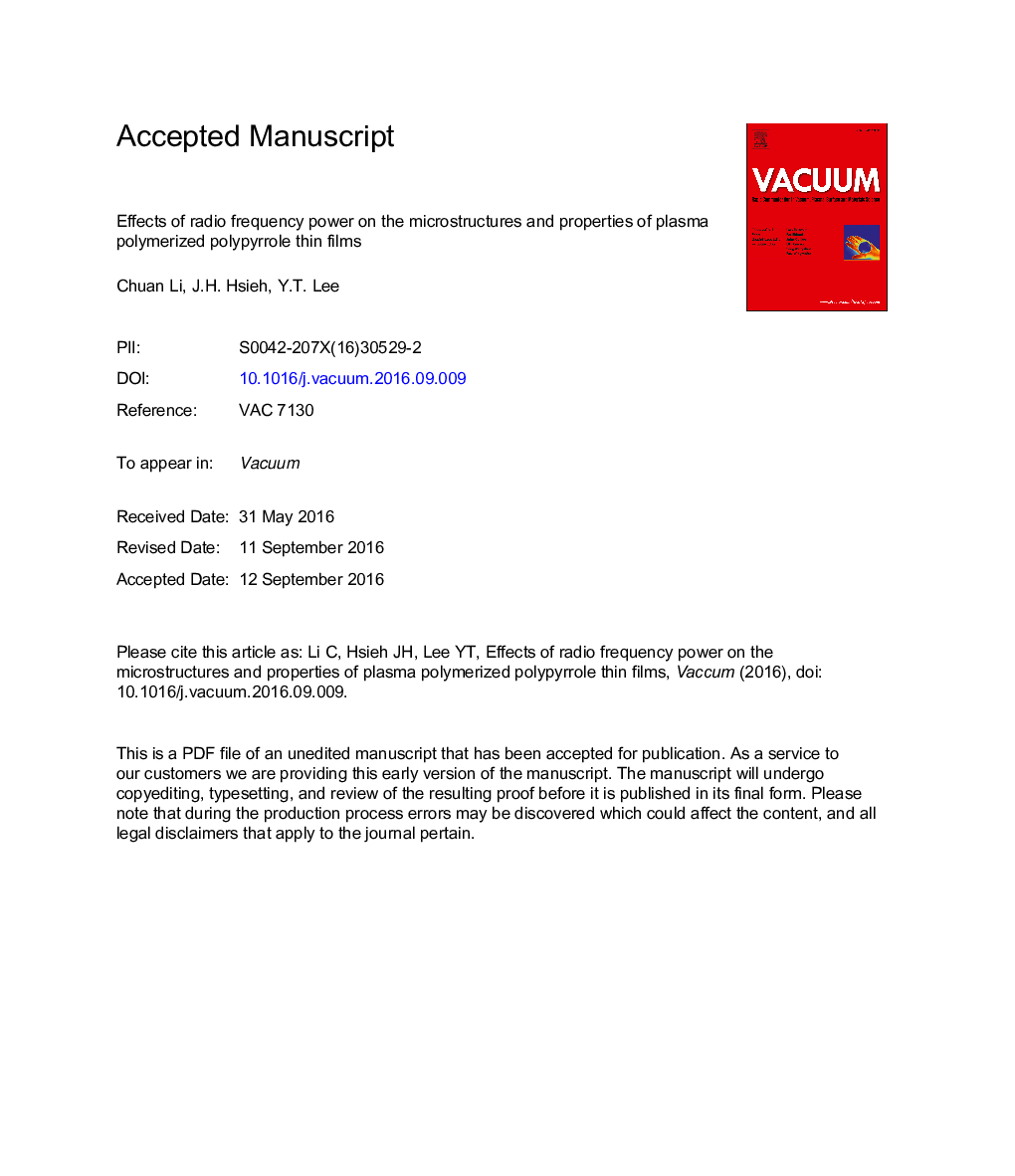| Article ID | Journal | Published Year | Pages | File Type |
|---|---|---|---|---|
| 5468316 | Vacuum | 2017 | 34 Pages |
Abstract
Polypyrrole films, deposited on glass or silicon substrate by plasma polymerization under different radio frequency power and pyrrole flow rates, were investigated in this study. The plasma condition was monitored by optical emission spectrometer and films' properties and functions were assessed by following instruments: surface profiler for the average thickness and deposition rate; Fourier transform infrared spectroscopy for the microstructural vibration modes; optical spectrometer for transmittance, reflectance and absorbance and contact angle for wettability. Some discoveries were found from these material characterizations. A higher power results in faster deposition rates and thicker films. All deposited films are transparent and made of fragmented pyrrole such as CN, CN, CC and NH whereas for the main part of pyrrole CCC, NCC bonds are relatively weak, which implies most carbon rings are fractured by the plasma. After material characterizations, a set of optimal process parameters, i.e. power and flow rate were chosen to deposit the pyrrole film as a diffusion barrier for chemical release. The chemical, dexamethasone 21-phosphate disodium salt, sandwiched between polypyrrole and substrate was immersed in de-ionized water over time. The concentration of released DPS in water via deposited film was found to increase with time but saturates after 48Â h.
Related Topics
Physical Sciences and Engineering
Materials Science
Surfaces, Coatings and Films
Authors
Chuan Li, J.H. Hsieh, Y.T. Lee,
